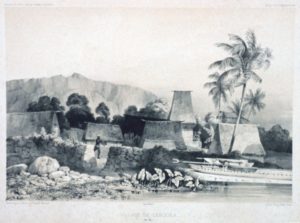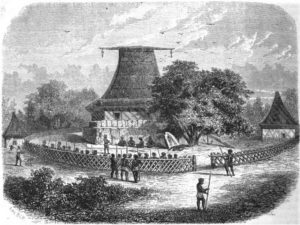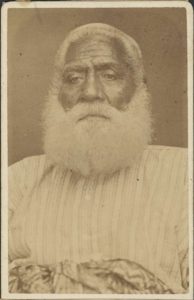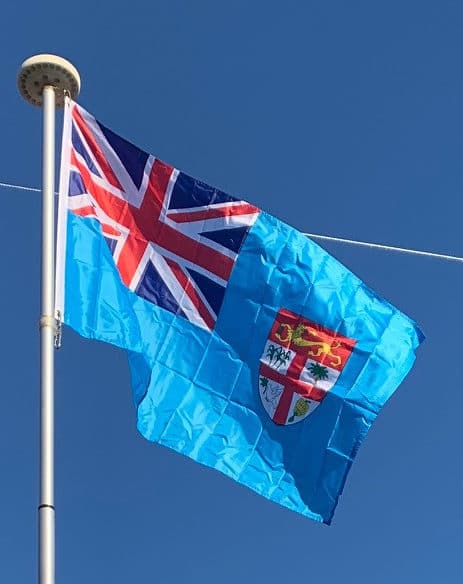
Christian missionaries like David Cargill also arrived in the 1830s from recently converted regions such as Tonga and Tahiti, and by 1840 the European settlement at Levuka had grown to about 40 houses. The religious conversion of the Fijians was a gradual process which was observed first-hand by Captain Charles Wilkes of the United States Exploring Expedition. Wilkes wrote that “all the chiefs seemed to look upon Christianity as a change in which they had much to lose and little to gain”.

Christianised Fijians, in addition to forsaking their spiritual beliefs, were pressured into cutting their hair short, adopting the sulu form of dress from Tonga and fundamentally changing their marriage and funeral traditions. This process of enforced cultural change was called lotu.
Cakobau and the Wars Against Christian Infiltration:
The 1840s was a time of conflict where various Fiji clans attempted to assert dominance over each other. Eventually, a warlord by the name of Seru Epenisa Cakobau of Bau Island was able to become a powerful influence in the region. Cakobau became so dominant that he was able to expel the Europeans from Levuka for five years over a dispute about their giving of weapons to his local enemies. In the early 1850s, Cakobau went one step further and decided to declare war on all Christians. His plans were thwarted after the missionaries in Fiji received support from the already converted Tongans and the presence of a British warship. Cakobau’s influence, however, began to wane and his heavy imposition of taxes on other Fijian chiefs, who saw him at best as first among equals, caused them to defect from him.

Around this time the United States also became interested in asserting their power in the region and they threatened intervention following a number of incidents involving their consul in the Fiji islands. A naval blockade was set up around the island which put further pressure on Cakobau to give up on his warfare against the foreigners and their Christian allies. Finally, on 30 April 1854, Cakobau offered his soro (supplication) and yielded to these forces. He underwent the “lotu” and converted to Christianity. Cakobau was retained as a largely symbolic representative of the Fijian people and was allowed to take the ironic title of “Tui Viti” (“King of Fiji”), but the overarching control now lay with foreign powers.
Cotton, Confederacies and the Kai Colo:
The rising price of cotton in the wake of the American Civil War (1861–1865) saw a flood of hundreds of settlers come to Fiji in the 1860s from Australia and the United States in order to obtain land and grow cotton. Since there was still a lack of functioning government in Fiji, these planters were often able to get the land in violent or fraudulent ways such as exchanging weapons or alcohol with Fijians who may or may not have been the true owners. Although this made for cheap land acquisition, competing land claims between the planters became problematic with no unified government to resolve the disputes. In 1865, the settlers proposed a confederacy of the seven main native kingdoms in Fiji to establish some sort of government. This was initially successful and Cakobau was elected as the first president of the confederacy.
